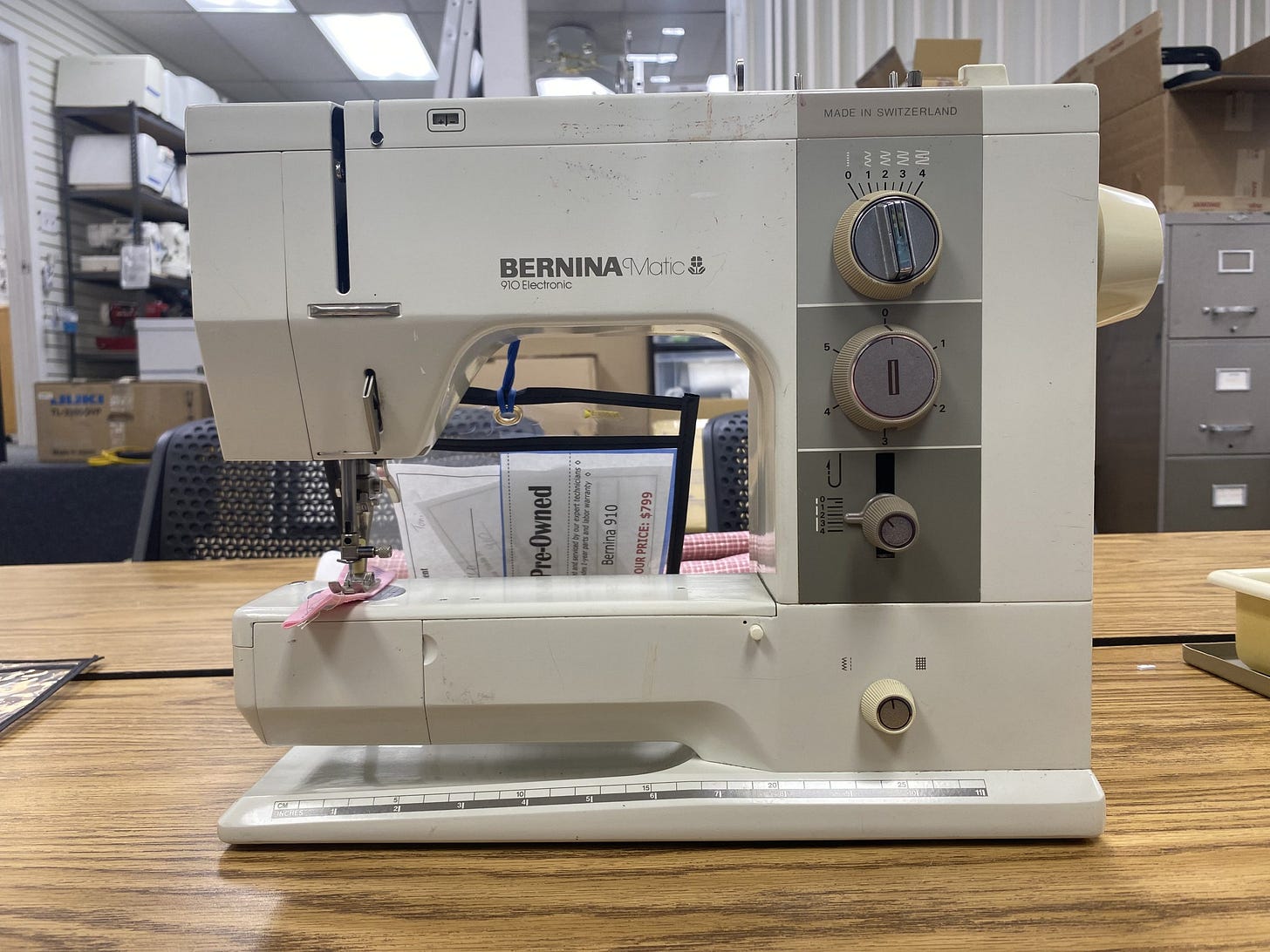Finding the Right Sewing Machine for a Blind Person
Recounting one of my favorite 45-Minute phone calls of all time
About a month ago I received a call from a woman in Texas who was in the market for a new sewing machine. For the sake of anonymity, let’s call her Nancy.
Like many people I meet at The Sewing Machine Shop, Nancy hadn’t sewn for a long time, but recently retired and was looking to get back into the hobby she once loved. Helping people find the right machine is a big part of my job and something I do every day, but this particular situation was unique: Nancy is blind and required a machine best suited for her condition.
“Mam, I hate to ask this so bluntly, but exactly how blind are you?”
“Let me put it like this,” she answered. “If I was walking down the street and you stepped in front of me, I couldn’t tell if it was you or a telephone pole. Both appear the same, just as one big shadow.”
The first thing that came to my mind was threading the needle. I imagine that threading the needle by hand would impossible if blind, and Nancy confirmed that to be true. Fortunately for her and many others, needle threader technology has come a long way in the past 15-20 years. Machines designed with a truly automatic needle threader (opposed to a semi-automatic needle threader) make threading the needle easier than ever, a blessing for thousands (if not millions) of people who still love sewing despite their eyesight getting worse with age.
I told Nancy about the invention of truly automatic needle threaders and she was thrilled. I started rattling off a number of different machines equipped with this needle threader, of which there are quite a few:
“You have the Baby Lock Brilliant, the PS500 from Brother, Janome Skyline S6 and S7, all Janome Continental machines, all the higher end Brother and Baby Lock combo machines—”
“And are any of these machines mechanical?”
“No, none of them are.”
“Oh, I should have mentioned, I need a mechanical machine.”
“Why mechanical?”
“Because I need to be able to feel the knobs turns when changing the different stitches and changing the length and width.”
Shoot! I had yet to consider the challenge of navigating the machine.
Initially it seemed like an impossible ask because, as far as I’m aware, there aren’t any mechanical machines equipped with truly automatic needle threaders. I put Nancy on hold to go upstairs and double check our selection of pre-owned machines, hoping that perhaps there was a special machine I had forgotten about.
There was a Bernina 1030, which is a beautiful (and rare) Swiss-made mechanical machine. It had the right knobs for stitch navigation and length/width, but it was manufactured in a time before the invention of needle threaders.
Same with a Bernina 910 Matic: simple design in terms of navigation, but from the era of machine pre-needle threaders.
We had a mechanical Pfaff 6122 in stock, which I thought was promising because it did have a needle threader. However, the needle threader is relatively rudimentary, what I consider a semi-automatic needle threader and not the truly automatic needle threader Nancy required.
“Sorry, Nancy, the vintage machines won’t cut it. As far as I know, there aren’t any mechanical machines in existence that posses a truly automatic needle threader.”
“Darnnit,” she said, frustrated. “And I just can’t do the computerized machines because I can’t feel the touchscreen.”
Can’t feel the touchscreen?
Can’t feel the touchscreen!
This was a clarifying moment moment for me.
Keep reading with a 7-day free trial
Subscribe to The Sewing Machine Newsletter to keep reading this post and get 7 days of free access to the full post archives.





